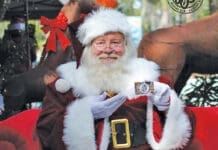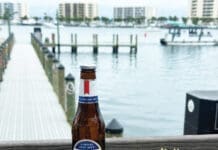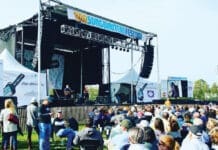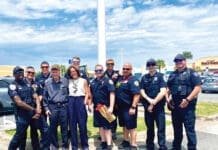 It’s almost spring and that means it’s peak mating season for horseshoe crabs. Help biologists with the Florida Fish and Wildlife Conservation Commission (FWC) gather valuable information about these ancient creatures by reporting sightings on the online survey at https://survey123.arcgis.com.
It’s almost spring and that means it’s peak mating season for horseshoe crabs. Help biologists with the Florida Fish and Wildlife Conservation Commission (FWC) gather valuable information about these ancient creatures by reporting sightings on the online survey at https://survey123.arcgis.com.
Horseshoe crabs have blue blood which is very expensive, but with numerous medical benefits. Due to this coveted resource, it’s become vulnerable to extinction. But, this highly-valuable resource worth protecting.
Horseshoe crabs mate by pairing up, with the smaller male attached to the larger female. They then crawl onto the beach up to the high tide line where the female digs a nest and lays her eggs, all while the male is attached and fertilizing the freshly laid eggs. They mate year-round, but it is most common to see mating groups along the shore of sandy, lower wave action beaches from March through October. Each season, usually May or June in our area, just one female crab can lay as many as 80,000 eggs!
Unlike other crabs, horseshoe crabs aren’t actually crustaceans – they don’t have antennae and they have multiple eyes. They are an arachnid (in the spider family).
You will have the most luck spotting horseshoe crabs around high tide within a few days of a new or full moon. If you see a horseshoe crab on its back, you can help it flip back over by gently picking it up (holding both sides of the shell), turning it over and releasing it back into the water. Simple actions such as this help conserve this species and the many other species that depend on it.
Reporting horseshoe crab sightings provides valuable information about habitat use, population distribution and environmental conditions for nesting to the FWC. Although horseshoe crabs have existed for more than 450 million years, scientists are still learning about Florida populations. Public sighting information helps FWC researchers target nesting beaches for the Florida Horseshoe Crab Watch Program, a citizen science based initiative to collect data throughout the state
.
You can report sightings by visiting MyFWC.com/research and clicking on “Crustaceans” then “Horseshoe Crabs” and selecting “Report Your Nesting Horseshoe Crab Sighting.”





























































